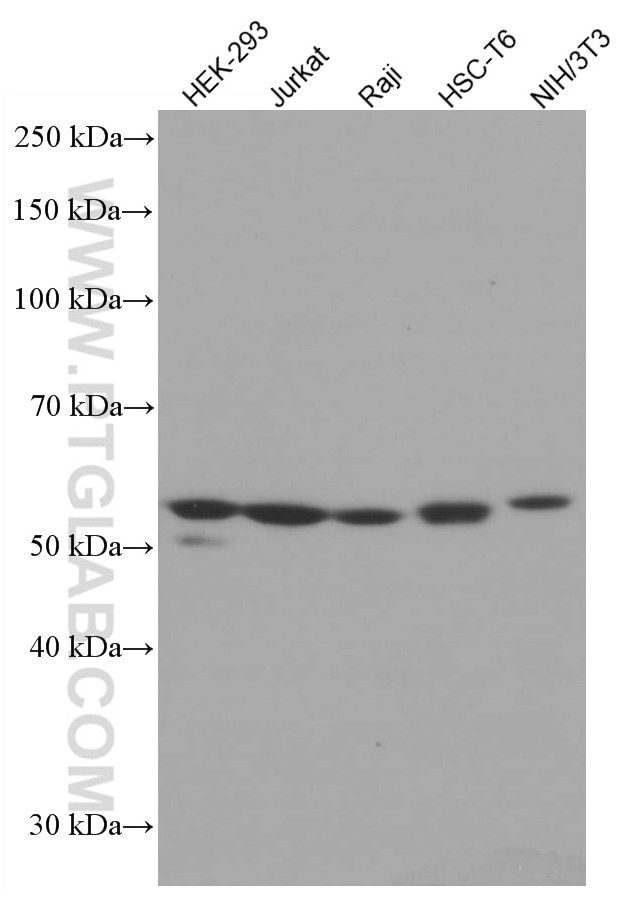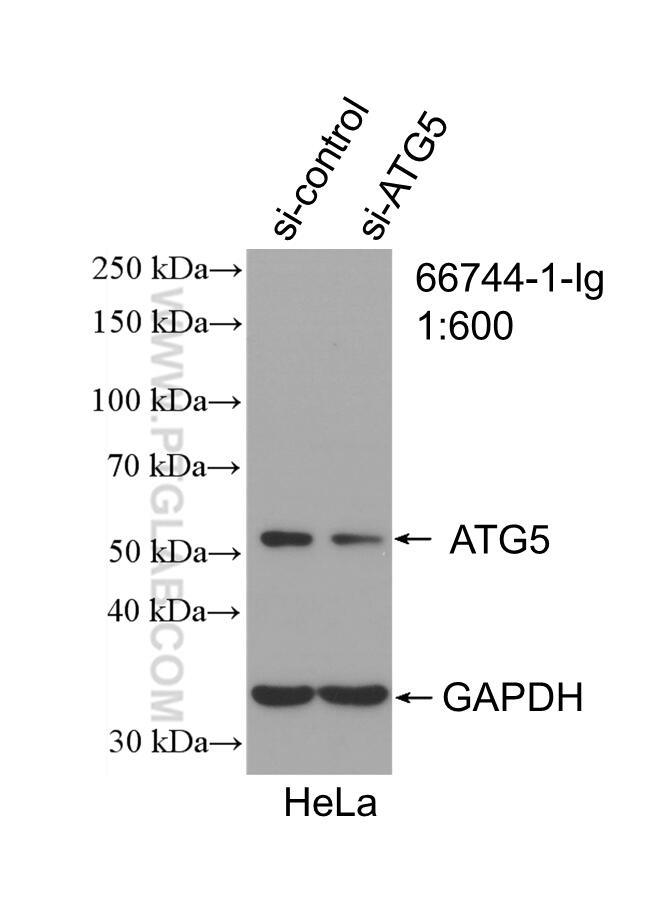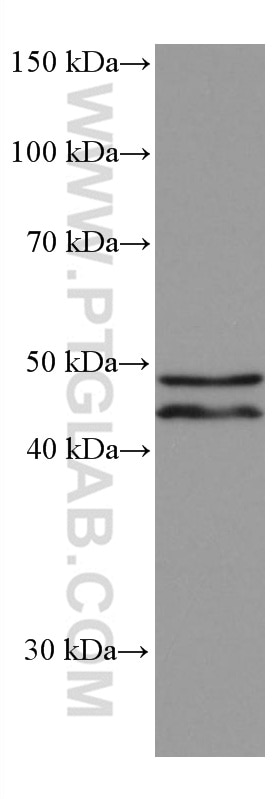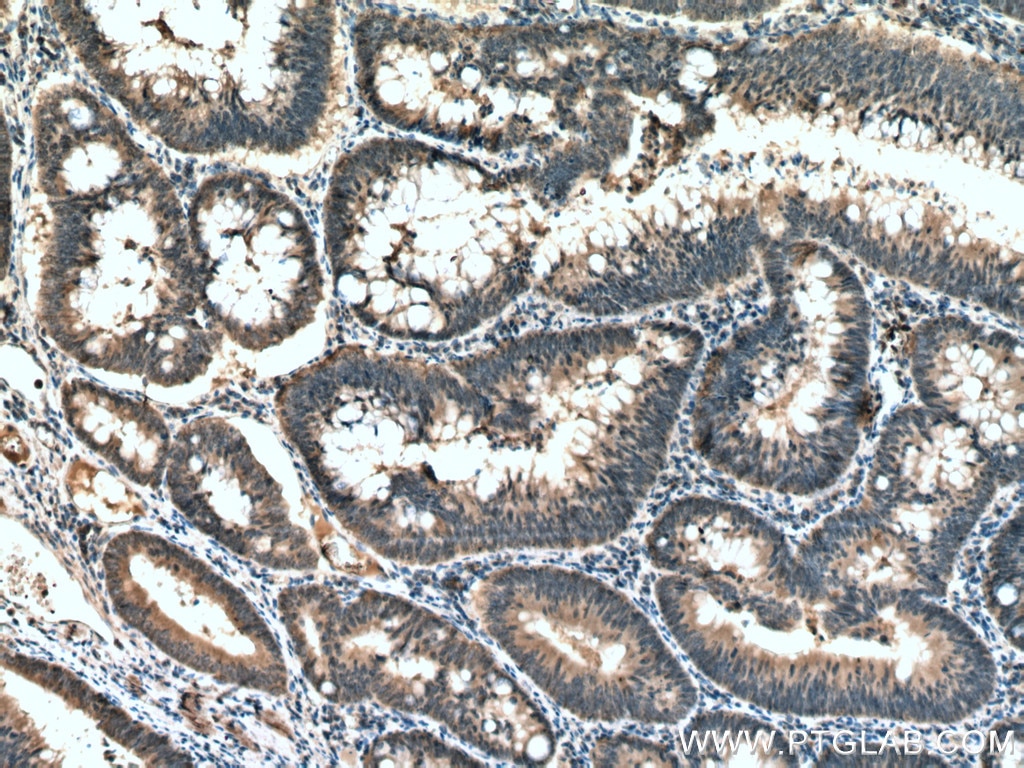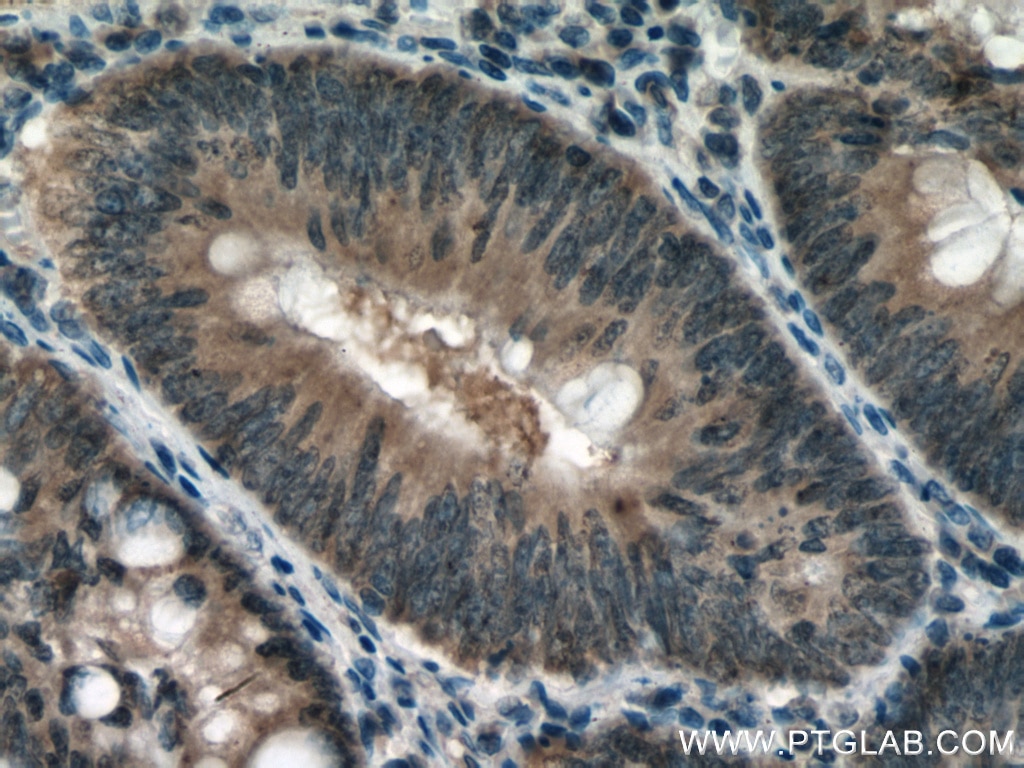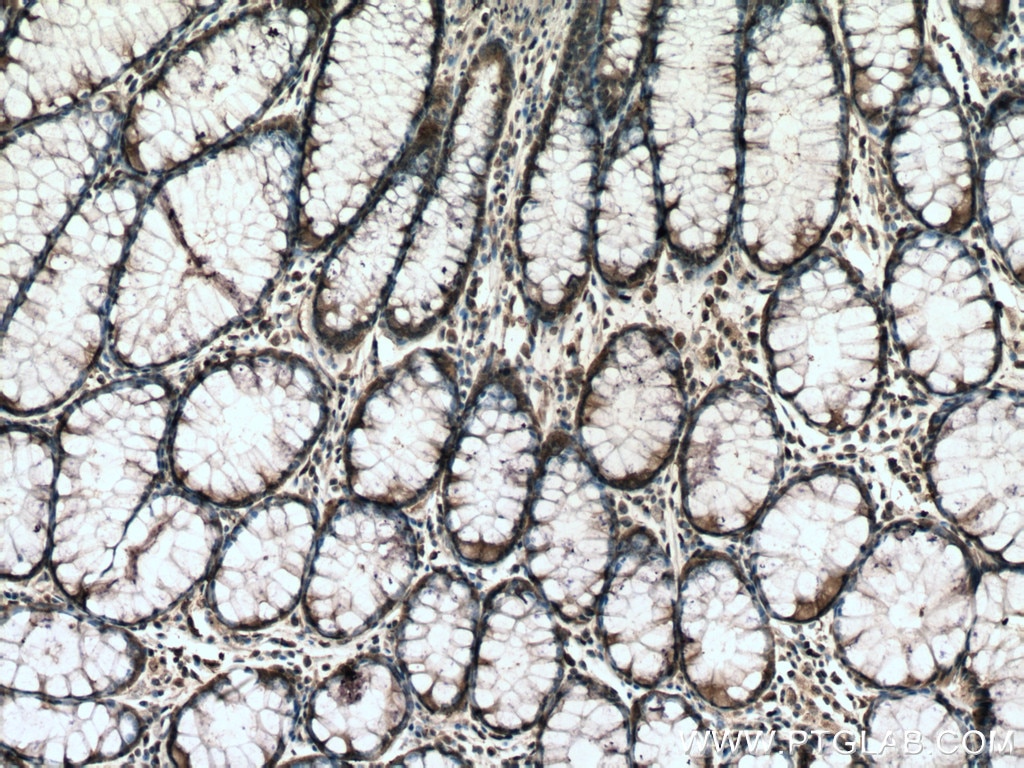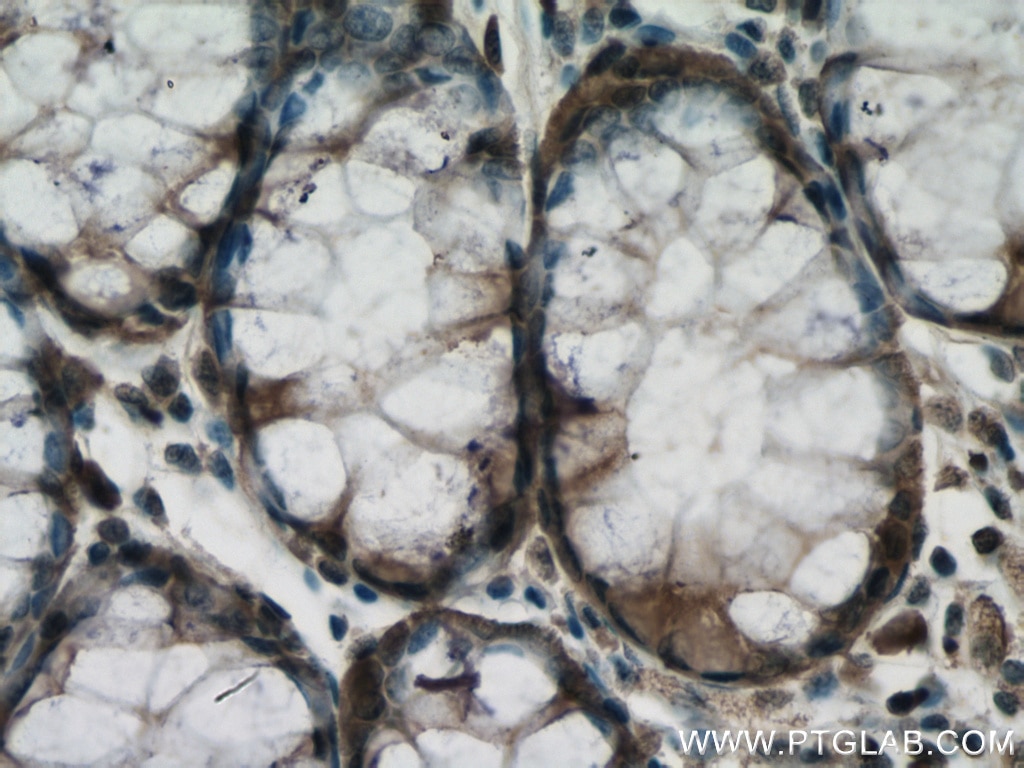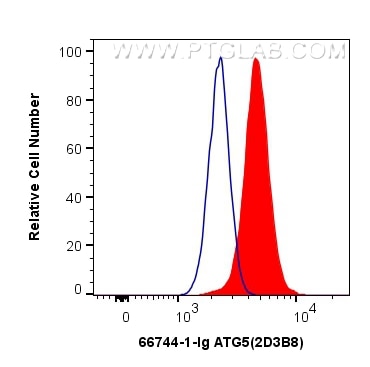- Phare
- Validé par KD/KO
Anticorps Monoclonal anti-ATG5
ATG5 Monoclonal Antibody for FC, IHC, WB, ELISA
Hôte / Isotype
Mouse / IgG2a
Réactivité testée
Humain, rat, souris et plus (1)
Applications
WB, IHC, IF, FC, ELISA
Conjugaison
Non conjugué
CloneNo.
2D3B8
N° de cat : 66744-1-Ig
Synonymes
Galerie de données de validation
Applications testées
| Résultats positifs en WB | cellules HEK-293, cellules HeLa, cellules HSC-T6, cellules Jurkat, cellules NIH/3T3, cellules Raji |
| Résultats positifs en IHC | tissu de cancer du côlon humain, il est suggéré de démasquer l'antigène avec un tampon de TE buffer pH 9.0; (*) À défaut, 'le démasquage de l'antigène peut être 'effectué avec un tampon citrate pH 6,0. |
| Résultats positifs en cytométrie | cellules MCF-7, |
Dilution recommandée
| Application | Dilution |
|---|---|
| Western Blot (WB) | WB : 1:1000-1:6000 |
| Immunohistochimie (IHC) | IHC : 1:150-1:600 |
| Flow Cytometry (FC) | FC : 0.40 ug per 10^6 cells in a 100 µl suspension |
| It is recommended that this reagent should be titrated in each testing system to obtain optimal results. | |
| Sample-dependent, check data in validation data gallery | |
Applications publiées
| KD/KO | See 4 publications below |
| WB | See 27 publications below |
| IF | See 1 publications below |
Informations sur le produit
66744-1-Ig cible ATG5 dans les applications de WB, IHC, IF, FC, ELISA et montre une réactivité avec des échantillons Humain, rat, souris
| Réactivité | Humain, rat, souris |
| Réactivité citée | rat, Humain, porc, souris |
| Hôte / Isotype | Mouse / IgG2a |
| Clonalité | Monoclonal |
| Type | Anticorps |
| Immunogène | ATG5 Protéine recombinante Ag16685 |
| Nom complet | ATG5 autophagy related 5 homolog (S. cerevisiae) |
| Masse moléculaire calculée | 32 kDa |
| Poids moléculaire observé | 50-55 and 40-45 kDa |
| Numéro d’acquisition GenBank | BC002699 |
| Symbole du gène | ATG5 |
| Identification du gène (NCBI) | 9474 |
| Conjugaison | Non conjugué |
| Forme | Liquide |
| Méthode de purification | Purification par protéine A |
| Tampon de stockage | PBS avec azoture de sodium à 0,02 % et glycérol à 50 % pH 7,3 |
| Conditions de stockage | Stocker à -20°C. Stable pendant un an après l'expédition. L'aliquotage n'est pas nécessaire pour le stockage à -20oC Les 20ul contiennent 0,1% de BSA. |
Informations générales
ATG5, also named as APG5L and ASP, belongs to the ATG5 family. It is required for autophagy. It plays an important role in the apoptotic process, possibly within the modified cytoskeleton. Its expression is a relatively late event in the apoptotic process, occurring downstream of caspase activity. Autophagy is a catabolic process for the autophagosomic-lysosomal degradation of bulk cytoplasmic contents. Formation of the autophagosome involves a ubiquitin-like conjugation system in which ATG12 is covalently bound to ATG5 and targeted to autophagosome vesicles. It mediates autophagosome-independent host protection. 66744-1-Ig antibody can recognize the ATG5-ATG12 complex (50-55 kDa) which can be truncated and generate a 40-45 kDa band. (PMID: 19783656, 25032862)
Protocole
| Product Specific Protocols | |
|---|---|
| WB protocol for ATG5 antibody 66744-1-Ig | Download protocol |
| IHC protocol for ATG5 antibody 66744-1-Ig | Download protocol |
| Standard Protocols | |
|---|---|
| Click here to view our Standard Protocols |
Publications
| Species | Application | Title |
|---|---|---|
Gastroenterology Pancreatic acinar cells-derived sphingosine-1-phosphate contributes to fibrosis of chronic pancreatitis via inducing autophagy and activation of pancreatic stellate cells | ||
J Nanobiotechnology Cold exposure protects against medial arterial calcification development via autophagy | ||
J Nanobiotechnology Reciprocal regulation of NRF2 by autophagy and ubiquitin-proteasome modulates vascular endothelial injury induced by copper oxide nanoparticles.
| ||
Cancer Cell Int LncRNA LZTS1-AS1 induces proliferation, metastasis and inhibits autophagy of pancreatic cancer cells through the miR-532 /TWIST1 signaling pathway | ||
Chemosphere Tetrachlorobenzoquinone exposure triggers ferroptosis contributing to its neurotoxicity. | ||
Stem Cell Res Ther Oncostatin M receptor regulates osteoblast differentiation via extracellular signal-regulated kinase/autophagy signaling. |
Avis
The reviews below have been submitted by verified Proteintech customers who received an incentive forproviding their feedback.
FH Marina (Verified Customer) (11-22-2021) | ATG 5 and the complex ATG5-ATG12 are visible, almost no background.
|
